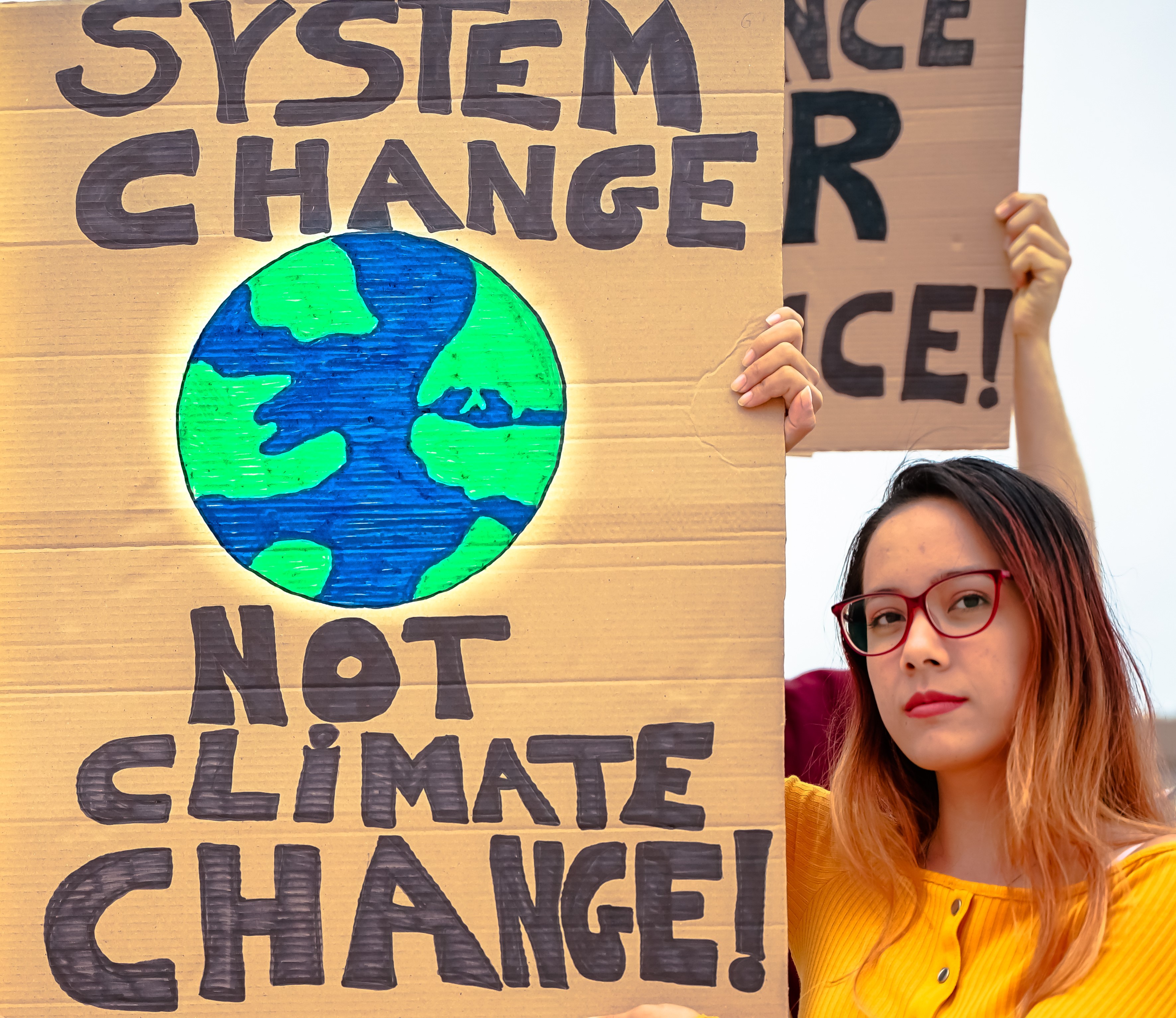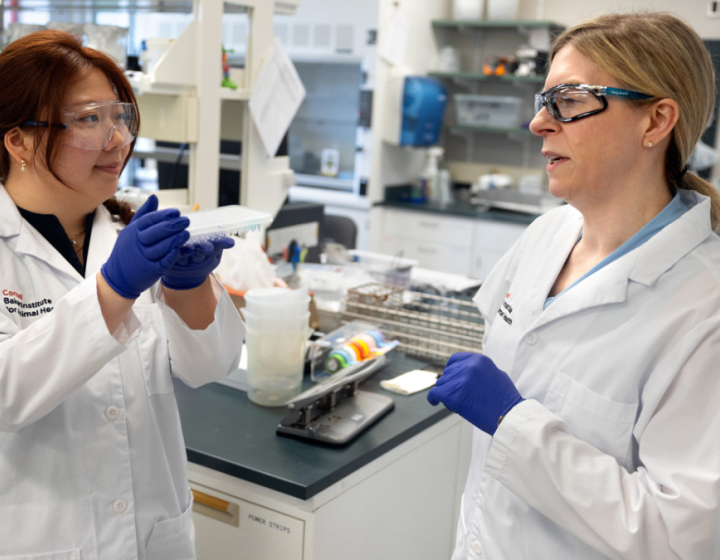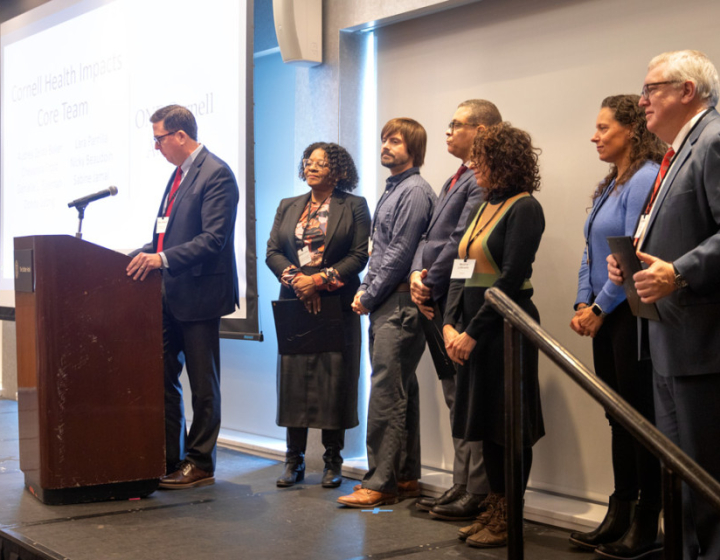Tackling Emerging Health Threats

The Challenges We Face
Emerging health threats take many forms including new infectious diseases, the movement of pathogens and vectors of diseases to new areas, the development of resistance to antimicrobials and vaccines, and increased exposure to environmental toxins, extreme weather events and other emergencies. As the impacts of climate change intensify, the threats to human and animal health are increasing in frequency and severity and will not be distributed equally across individuals, populations, or countries.
 Compounding the effects of these new threats to the health of people and the natural systems on which we depend, are persistent inequalities and oppression across social categories such as race and ethnicity, gender, sexuality, and income. On their own, these inequities are revealed in chronic disease and lack of access to health care and services in vulnerable populations. But these same communities feel disproportionate impacts of these emerging health threats. Examples include the loss of homes to floods and wildfires, loss of lives and livelihoods from the spread of novel diseases (e.g., COVID-19, Ebola), and forced human migration due to loss of water and food from drought. As societies struggle with access to scarce resources, inequalities and conflict often worsen. Societal and political systems have failed to correct these inequalities and are inadequately prepared to address the disproportionate impacts of emerging health threats among vulnerable populations.
Compounding the effects of these new threats to the health of people and the natural systems on which we depend, are persistent inequalities and oppression across social categories such as race and ethnicity, gender, sexuality, and income. On their own, these inequities are revealed in chronic disease and lack of access to health care and services in vulnerable populations. But these same communities feel disproportionate impacts of these emerging health threats. Examples include the loss of homes to floods and wildfires, loss of lives and livelihoods from the spread of novel diseases (e.g., COVID-19, Ebola), and forced human migration due to loss of water and food from drought. As societies struggle with access to scarce resources, inequalities and conflict often worsen. Societal and political systems have failed to correct these inequalities and are inadequately prepared to address the disproportionate impacts of emerging health threats among vulnerable populations.
These emerging health threats also affect how humans use and interact with the natural systems on which we depend, at the same time that plants and animals are themselves suffering from climate change. The resulting loss of biodiversity leads to the loss of the goods and services on which all life depends. This vicious cycle results in new public health threats, including increased spillover of diseases from wildlife to people, reductions in availability of food, and reduced livelihood opportunities. In these ways, the challenges of emerging health threats tie directly with challenges in achieving healthy food systems and in conserving biodiversity.
What We Do
 Our transdisciplinary faculty conduct both the practice of public health and veterinary medicine, as well as basic and applied research in biological sciences (e.g., diagnostics/disease surveillance, ecology, epidemiology, infectious diseases), and earth/social sciences (e.g., communication, information systems, mapping, policy), to prevent and mitigate emerging health threats.
Our transdisciplinary faculty conduct both the practice of public health and veterinary medicine, as well as basic and applied research in biological sciences (e.g., diagnostics/disease surveillance, ecology, epidemiology, infectious diseases), and earth/social sciences (e.g., communication, information systems, mapping, policy), to prevent and mitigate emerging health threats.
Through understanding the systems and policies that lead to emergence of new health threats, we seek to prevent them, not just respond to them. At the same time, knowing that these challenges are increasing, we help prepare communities and the public health, scientific and veterinary workforces for future health emergencies. In all we do, we address health disparities arising from structural barriers and injustices, and strive for impact on both persistent and new threats to the interconnected health of people, animals, and the planet.
Faculty Projects: Tackling Emerging Health Threats
Dr. Casey Cazer discusses infectious disease surveillance and the growing threat of antimicrobial resistance
Dr. Laura Goodman discusses using pathogen genomics to inform policy on infectious disease management
Dr. Karla Hanson discusses her work with Mutual Aid Tompkins' food sharing program
Dr. Corinna Noel discusses implementing a near real-time overdose surveillance system in Cayuga County, NY
Dr. Raina Plowright discusses how to prevent zoonotic spillover by restoring wildlife habitats
Dr. Charley Willison discusses public health policies that address homelessness





